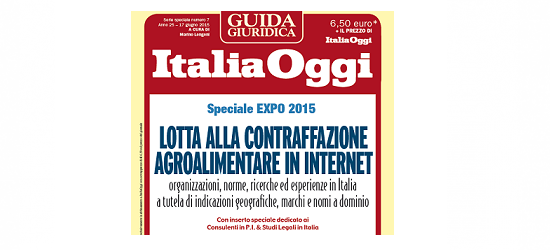
Arianna Di Sanno, Registered trainee lawyer and Michele Elio De Tullio, Lawyer
De Tullio & Partners
Italian food products are among the most popular in the world and constitute an important quota of the exports in the United States, which is the first target market for Italian products. Quality products are those most requested by North American consumers, who have fine-tuned their tastes and are looking more and more for foods that recall specific areas of the peninsula. The protection of quality products is a controversial issue: in some countries, it is ensured by intellectual property rights such as PDOs and PGIs (hereinafter also GIs); in other countries, like the US, this type of protection is not guaranteed by national law nor by international laws such as the Lisbon Agreement. In the US, those who want to protect quality products must use certification marks, i.e. marks which have the function to certify the local origin of products, the raw materials used, the method of production, quality, accuracy, or to indicate that the processing of the product has been made by a member of a consortium. The function of such marks is to certify the nature and the quality of a product and its adherence to certain quality standards. The holder of this trademark cannot use it independently, but must control the compliance with certain quality standards and grant the use of the sign to anyone who meets these standards. The application of a certification mark must be filed at the USPTO, which examines the documentation and the proofs concerning the use, in order to determine whether the mark is actually used as a certification mark to indicate the geographical origin of the relevant goods. In the event that the documentation or any other evidence suggests that the sign has a generic meaning, the application is rejected; in particular, there is the well-known case of Fontina, where such name was deemed generic by the USPTO, who rejected the trademark application [In re Cooperative Produttori Latte e Fontina Valle D’Aosta]. The key element for assessing the generic character of a sign is the assessment of consumer awareness about the fact that the term in question indicates only the product of that geographical area, as has been held by the USPTO in the case of Community of Roquefort v. William Faehndrich, Inc. Despite such alternative mean of protection, the US do not grant today to GIs a protection comparable to that accorded to them by European legislation and the Lisbon Agreement which has recently been amended with the Geneva Act signed on May 21, 2015; the new agreement improves the existing text, strengthens the protection for right holders and aims to extend the basis of member countries maintaining the same quality standards for the protection of GIs.
Unfortunately, the willingness of the EU and some countries in particular (i.e. Italy) to extend the international recognition of European GIs and strengthen the international protection of GIs and, clashes with the position of those countries (i.e. the USA) which adopt an alternative system for the protection of GIs, not having an autonomous and specific sui generis protection system.
The commitment of the EU to extend the protection and recognition of GIs is also demonstrated by the conclusion of bilateral international agreements, so-called Free Trade Agreement (such as those concluded with South Korea and Canada), by which the contracting countries recognize in their territory the European GIs. In this context, the EU has recently agreed to negotiate with the US the TTIP (Transatlantic Trade and Investment Partnership), a treaty that will lead to an integration of the two markets, by removing some barriers, reducing tariffs and creating a free trade area between the two regions. Among the topics covered by the Treaty, there is the recognition of European GIs by the US, with the accordance of a safeguarding that could allow to achieve a higher level of protection and to fight more effectively the phenomenon of so-called Italian Sounding.
